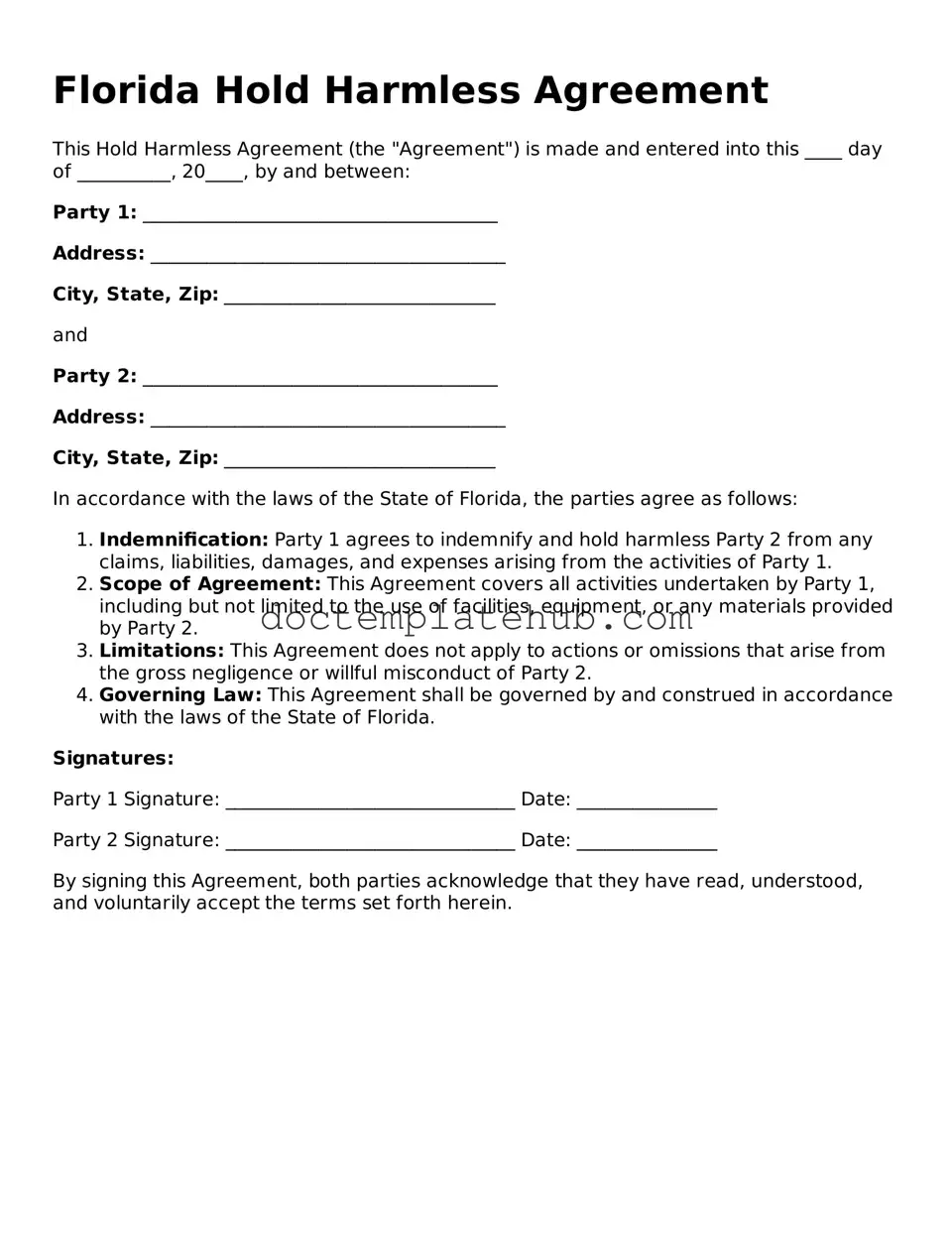What is a Florida Hold Harmless Agreement?
A Florida Hold Harmless Agreement is a legal document that protects one party from liability for any damages or injuries that may occur during a specific activity or event. This agreement is commonly used in various situations, such as construction projects, events, or rental agreements. By signing this document, one party agrees not to hold the other party responsible for certain risks associated with the activity.
Who typically uses a Hold Harmless Agreement in Florida?
This agreement is often utilized by businesses, event organizers, property owners, and contractors. For example, if a contractor is hired to perform work on a property, the property owner may require the contractor to sign a Hold Harmless Agreement to protect themselves from any claims arising from the contractor's work. Similarly, event organizers may use this agreement to shield themselves from liability for accidents that occur during their events.
What are the key components of a Hold Harmless Agreement?
A Hold Harmless Agreement typically includes several important elements. These include the names of the parties involved, a clear description of the activity or event, the specific liabilities being waived, and the duration of the agreement. Additionally, it may outline any indemnification provisions, which detail how one party will compensate the other for any claims or damages incurred.
Is a Hold Harmless Agreement enforceable in Florida?
Yes, a Hold Harmless Agreement is generally enforceable in Florida, provided it is clear and specific. However, there are some limitations. For instance, the agreement cannot waive liability for gross negligence or willful misconduct. Courts may also scrutinize the agreement to ensure that it does not violate public policy. It is advisable to consult with a legal professional to ensure the agreement meets all necessary legal standards.
Can a Hold Harmless Agreement be modified after it is signed?
Yes, a Hold Harmless Agreement can be modified after it is signed, but both parties must agree to the changes. Any modifications should be documented in writing and signed by both parties to ensure clarity and enforceability. Verbal agreements or informal changes may not hold up in court, so it is crucial to keep all modifications formal and documented.
What should I do if I am asked to sign a Hold Harmless Agreement?
If you are asked to sign a Hold Harmless Agreement, it is important to read the document carefully. Understand the risks you are agreeing to assume and the extent of the liability you are waiving. If you have any concerns or questions, consider seeking legal advice before signing. It is crucial to ensure that you fully comprehend the implications of the agreement and how it may affect your rights.
